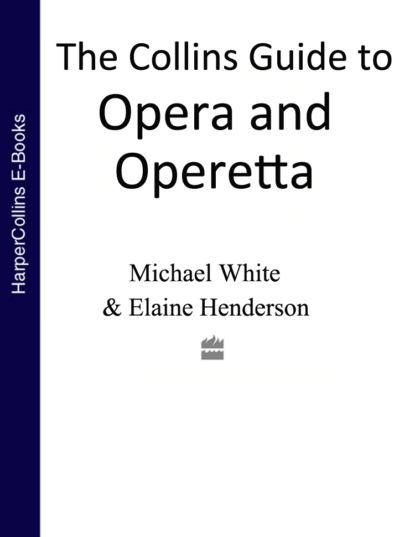По всем вопросам обращайтесь на: info@litportal.ru
(©) 2003-2024.
✖
The Collins Guide To Opera And Operetta
Автор
Год написания книги
2018
Настройки чтения
Размер шрифта
Высота строк
Поля
Soprano
Yniold, Golaud’s son by his first marriage
Soprano/Boy treble
Synopsis of the Plot
Setting: The imaginary kingdom of Allemonde; medieval times
ACT I While out hunting, Golaud finds a mysterious girl, Mélisande, weeping in a forest; nearby is a well with a golden crown at the bottom, fallen from her head. Golaud marries Mélisande and, some time later, takes her to Arkeľs castle to ask his grandfather’s forgiveness for the unplanned marriage; Arkel had a different bride in mind for Golaud. On her arrival, Mélisande meets Pelléas and it is clear that they have fallen in love with each other.
ACT II Pelléas and Mélisande are together by a well when Mélisande drops her ring into the water; at that moment Golaud falls from his horse. Later, lying injured in bed, Golaud notices that the ring is missing and Mélisande replies, falsely, that she lost it by the sea. Golaud sends her, with Pelléas, to look for it.
ACT III Mélisande is sitting at the castle window, talking to Pelléas; she allows her long hair to fall over his shoulders and he plays with it. They are surprised in their game by Golaud who warns Pelléas to leave Mélisande alone. Golaud then questions his little son, Yniold, about the relationship between Pelléas and Mélisande and even holds him up to the window so that he can see what they are doing: just sitting together, answers the boy.
ACT IV Pelléas tells Mélisande that he is leaving and they plan one last meeting. Golaud is by now furiously jealous and attacks Mélisande, dragging her across the room by her hair until he is stopped by Arkel. The two lovers meet by the well, as arranged. In the distance they hear the castle doors being locked and barred – there is no going back. Golaud, hiding nearby, hears and sees their declarations of love; he leaps at them, killing Pelléas while Mélisande escapes.
ACT V Mélisande has given birth to a child and now lies, ill and dying, at the castle. Golaud begs her forgiveness, which she grants, but his desperate pleas to know whether she was unfaithful go unanswered as her life ebbs away.
Music and Background
One of the greatest and most beautiful of 20th-century operas, Pelléas et Mélisande can also be one of the most maddening, in that it sets Maeterlinck’s story in such muted, enigmatic and elusive terms. As the short, often inconclusive scenes waft delicately by, you feel you want to shake the characters into livelier reactions and the music into more obvious climaxes. But then, this is symbolist drama: a thing of dream-like nuance rather than emphatic statement. With motifs tied to specific characters and orchestral interludes (not always played) between the scenes, it owes a debt to Wagner, whose influence Debussy tried and failed to resist. Tristan und Isolde is a clear point of reference. But the Wagnerism in Pelléas et Mélisande is purified, its opulence refined down to more modest, simple terms and a kind of unadorned word-setting, halfway between speech and chant, with one note per syllable. The role of Pelléas requires a peculiarly light, high-lying baritone to bring it off stylistically.
Highlights
With no arias and such general restraint, it would be misleading to call anything here a ‘highlight’, but the loss of the ring in Act II and Golaud’s use of the child Yniold to spy on Mélisande are, in different ways, disturbing moments.
Did You Know?
A row with Maeterlinck over the casting of Mélisande (he wanted the part to go to his mistress) meant that Maeterlinck dissociated himself from the premiere and had hostile notes printed for distribution to the first night audience, which helped provoke uproar in the theatre.
Recommended Recording
Francois Le Roux, Maria Ewing, José van Dam, Vienna Philharmonic Orchestra/Claudio Abbado. DG 435 344-2. The best all-round cast, the best orchestral sound, and conducting of clear, focused elegance.
Léo Delibes (#ulink_50bd375a-b40e-50f1-93de-6a084cb99177)
(1836–91)
Lakmé (1883)
Brought up in Paris, Delibes studied at the Conservatoire there and felt the lure of the theatre early on as a boy chorister at the Paris Opéra. But it was as a composer for the ballet that he made a lasting reputation, with works like Coppélia (1870) and Sylvia (1876), which remain classics of the genre. His vocal style was formed in operetta, writing for Offenbach’s theatre the Bouffes-Parisiens, and its hallmarks remained lightweight elegance and wit. Only one serious opera survives in repertory.
Lakmé (#ulink_0f26275d-5558-5129-a751-703f46cff260)
FORM: Opera in three acts; in French
COMPOSER: Léo Delibes (1836–91)
LIBRETTO: Edmond Gondinet and Philippe Gille; after Loti’s novel
FIRST PERFORMANCE: Paris, 14 April 1883
Principal Characters
Lakmé
Soprano
Mallika, her slave
Mezzo-soprano
Hadji, her servant
Tenor
Nilakantha, Lakmé’s father, a Brahmin priest
Bass-baritone
Gérald, a British officer
Tenor
Frédéric, a British officer
Baritone
Synopsis of the Plot
Setting: Imperial India; 19th century
ACT I Gérald, his fiancée and other friends, are wandering near Nilakantha’s home when they come across the temple, breaking down a bamboo fence to gain access. Gérald is left behind, sketching, as the others move on and is seen by Lakmé and Mallika. Gérald is instantly entranced by the beautiful Lakmé, who responds to his fervour, although her main concern is his safety; her father harbours an implacable hatred for the British occupiers of India. Gérald disappears through the broken fence as they hear Nilakantha returning. Nilakantha notices the damage and swears vengeance on those who had dared to profane his sacred ground.
ACT II While visiting the market Gérald hears Lakmé singing – a trap devised by her father to catch the man who desecrated his garden, attracted there, he believes, by Lakmé’s beauty. When Lakmé sees Gérald she faints and he rushes to her side. Nilakantha stabs him.
ACT III Helped by Hadji, Lakmé has taken Gérald to a secret hideaway. But Frédéric has followed the wounded officer and, when Lakmé goes to fetch water from the sacred spring, he appeals to Gérald to leave with the regiment that night. Gérald agrees. When she returns, bringing the water that, when drunk by lovers, assures them of everlasting love, Lakmé senses his change of heart. She takes a leaf from the poisonous datura tree and bites it, before they drink the water together. Gérald is broken-hearted when she dies, but her father, knowing that his beloved daughter will have eternal life, accepts her death with equanimity.
Music and Background
While Lakmé’s plot has the sort of exotic setting fashionable at that time, the music is uncommonly well-written and fresh-sounding for a score that doesn’t attempt anything particularly radical. The models are Massenet and Bizet, and its decorous melodies sing out in strictly formal, self-contained numbers as though Wagner had never existed. But no matter. With appealingly restrained touches of oriental colour and enchanting lyricism it remains a winner with audiences and singers alike. Most of the great sopranos with a claim to coloratura – the ability to negotiate highly decorative vocal lines – have been drawn to the title role.
Highlights
The famous Act I ‘Flower Duet’ for Lakmé and Mallika is a celebration of the female voice, spinning embroidered skeins of song in long, unbroken, creamily seductive measures. Lakmé’s Act II ‘Bell Song’ is a showpiece aria.
Did You Know?









